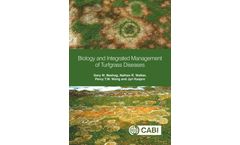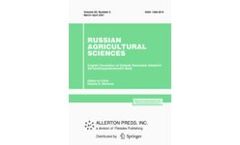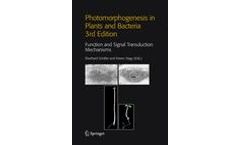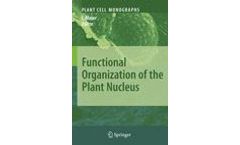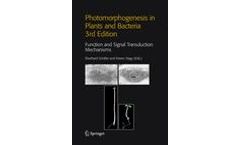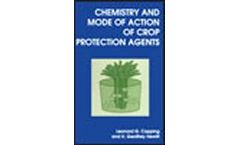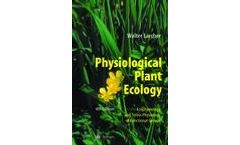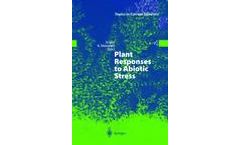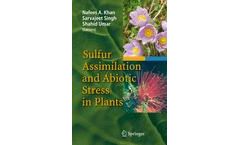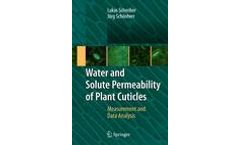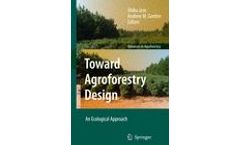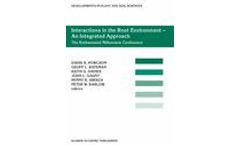Refine by
plant-growing books
43 books found
As increasing global population and continuing economic development ensure the need for further production and cultivation of maize, the necessity of the application of transgenic technology to this model species and crop plant grows steadily. In Transgenic Maize: Methods and Protocols, experts in the various disciplines of the field contribute readily ...
Cultivated turfgrass is an assemblage of mown, perennial grasses or prostrate-growing forb plants and a suite of microbes all competing with each other in a common environment. This book approaches turfgrass diseases from an ecological perspective and explains with examples how wild plants and microbes have co-evolved. It addresses the ...
The journal publishes review and original contributions from all areas of agriculture, biological sciences, biotechnology, and cology under the headings of crop cultivation, genetics, selection, plant growing, and horticulture; plant physiology and biochemistry; plant protection; agrochemistry; soil science; ...
Soils, Society and the Environment focuses mainly on soil as the primary source of food and fiber (such as cotton and wood). Growing plants in soil is the only known way to produce large quantities of these necessities, and ...
This unique resource reviews progress made by scientists researching into how ambient changes in the wavelength, intensity, direction and duration of light environment affect plant growth and development - explaining how combinations of new research with classical photobiology and physiology made feasible to interpret intriguing light dependent phenomena such as phototropism, determination of ...
While the cell nucleus was first identified in a plant, we know now far less about the plant nucleus than we know about its equivalent in animals or in fungi, because the field of nuclear biology has been predominantly driven by the non-plant model systems. More recently, however, plant biology has begun to catch up as research groups worldwide actively address the processes that define the plant ...
This unique resource reviews progress made by scientists researching into how ambient changes in the wavelength, intensity, direction and duration of light environment affect plant growth and development - explaining how combinations of new research with classical photobiology and physiology made feasible to interpret intriguing light dependent phenomena such as phototropism, determination of ...
This book represents the authors' lifetime dedication to the study of inhibitors and phytohormones as well as its practical applications for achieving a more sustainable agriculture. Their work focuses on the functions of various groups of active molecules, their direct effect upon plant growth, but also implications for their impact upon the surrounding environment are explored. The main idea of ...
Over the past 40 years, the SIP meetings have played a central role in the development of the field of insect-plant relationships, providing both a show-case for current research as well as a forum for the airing and development of influential new ideas. The 10th symposium, held 4-10 July 1998, in Oxford, followed that tradition. The present volume includes a representative selection of ...
This book examines the chemistry and mode of action of herbicides, insecticides, fungicides and plant growth regulators. It follows crop protection strategies from early discoveries to the present day, emphasising the biochemical targets of the compounds discussed. Chemistry and Mode of Action of Crop Protection Agents provides an in-depth, yet easy to read and understand, review of the major ...
From the reviews of the 3rd edition: "The textbook of Walter Larcher (...) belongs certainly to the most successful manuals that ever existed." (Photosynthetica, Czech Republic)"(...) it continues to be one of the major texts in the field of ecophysiology."(Plant Growth Regulation, The Netherlands) "This book is really a must reading for those interested in sustainable forestry." (Journal of ...
Environmental stresses represent the most limiting factors for agricultural productivity. Apart from biotic stress caused by plant pathogens, there are a number of abiotic stresses such as extremes in temperature, drought, salinity, heavy metals and radiation which all have detrimental effects on plant growth and yield. However, certain plant species and ecotypes have developed various mechanisms ...
This book, which has derived from UNEP-sponsored training courses in the subject, contains vital up-to-date information, presented by a leading team of international experts, on all the major parameters of plant growth and the effect upon them of global climate change. It will be an invaluable manual and reference source for students and researchers in plant science, ecology and environmental ...
Sulfur is one of the four major essential elements necessary for the plant life cycle. Its assimilation in higher plants and its reduction in metabolically important sulfur compounds are crucial factors determining plant growth and vigor and resistance to stresses. The range of biological compounds that contain sulfur is wide. The information on sulfur assimilation can be exploited in tailoring ...
The study of permeability of plant cuticles is gaining interest since transport processes play a crucial role in plant ecology, plant stress tolerance, plant growth regulation, plant protection, phytopathology and the accumulation of xenobiotics in plants. Penetration of neutral and ionic solutes can be modeled and predicted, provided suitable experiments based on sound theories are conducted ...
Jose and Gordon’s Toward Agroforestry Design is an important reference for anyone interested in exploring or managing the physiological and ecological processes which underlie resource allocation and plant growth in agroforestry systems. Drawing together a wide range of examples from around the world, the book highlights how recent developments in agroforestry research can contribute to ...
This volume contains a selection of papers presented at the Rothamsted Millennium Conference "Interactions in the Root Environment - an Integrated Approach". The meeting brought together scientists from a range of disciplines interested in the relationship between soil biology and plant growth, reflected by the contents of the volume. Topics range from root development and nutrient flow, ...
Special Lecture: The Origin, Diversity, and Biology of Shoot-Borne Roots; P.W. Barlow. The Commercial Importance of Adventitious Rooting: Commercial Application of Adventitious Rooting to Forestry; G.A. Ritchie. Infrastructure for Research: Model Systems for Studying Adventitious Root Formation; S.G. Ernst. Setting the Stage for Rooting: Novel Experimental Systems for Determining Cellular ...


